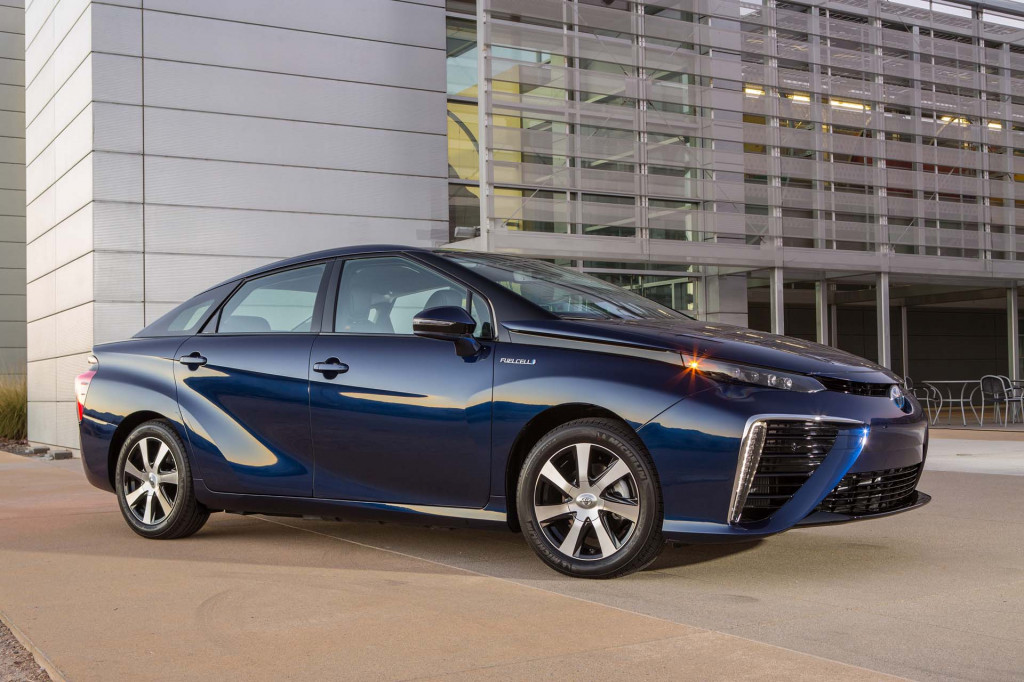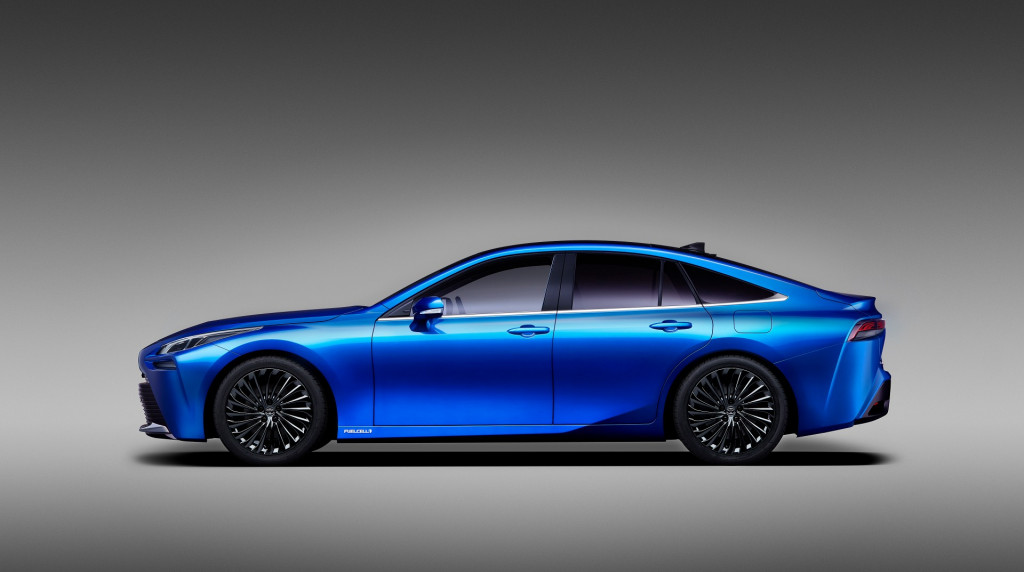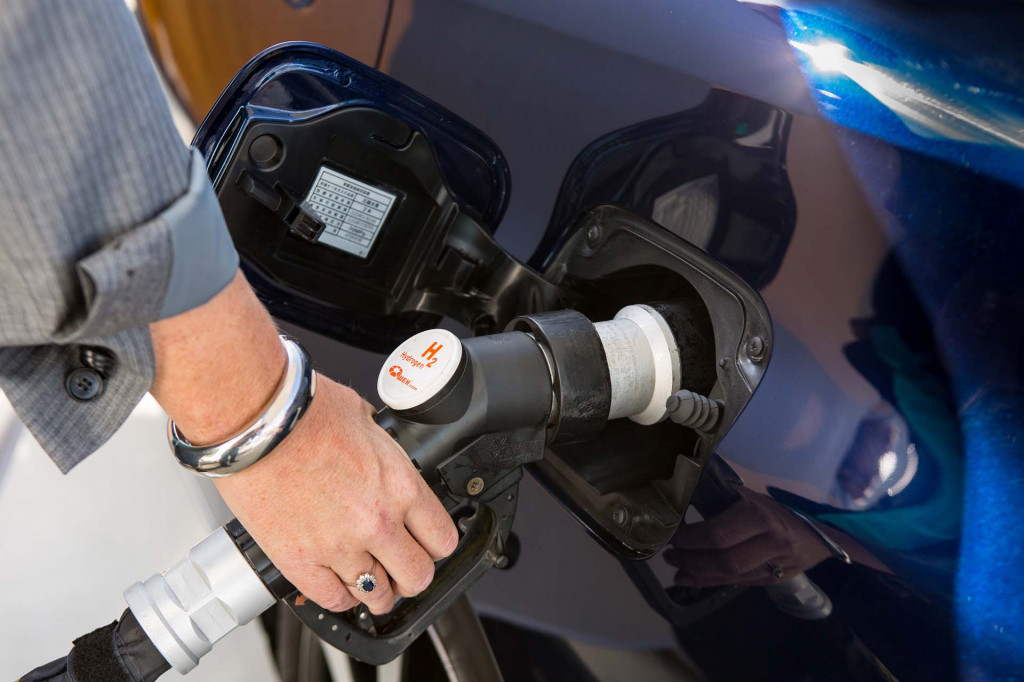The best move Toyota could possibly have made in conceiving a second-generation version of its Mirai fuel-cell vehicle was giving its design and engineering teams a clean slate.
According to Yoshikazu Tanaka, the chief engineer of the Mirai, that’s exactly what happened.
With a lukewarm reception in the U.S. to the previous car’s design, and infrastructure here that hasn’t grown as rapidly as anticipated, the Mirai is looking like Toyota’s best effort on the passenger-car front—as it continues to prove the worth of its fuel-cell investments in other ways, with heavy-duty trucks, mobility projects, and the greening of its assembly plants.
Yet the mission itself was especially challenging: 10 times the sales volume of the current Mirai.
Tanaka hinted that this demanded a very attractive, compelling product, and he summed his mission as a question: “Within the limitations of the refueling structure…how appealing of a car could we create?”

2019 Toyota Mirai
The answer is something far more attractive than the current Mirai—in the form of the radically different 2021 Toyota Mirai sporty sedan that made its debut in concept form at last October’s Tokyo Motor Show
Toyota still hasn’t to this day provided dimensions or specs for the production Mirai, But at the LA show in November, we caught up with Tanaka, and he gave us exterior dimensions from the top of his head for the production version. They’re all within 10 mm of what was noted in Toyota’s concept release. He also hinted that the production model will look just as good.
At 195.6 inches long by 74.5 inches wide, and riding on a 115.0-inch wheelbase, the Mirai has a substantially larger footprint than the outgoing car (several inches larger in all of those). But at 53.9 inches high, it’s 2.6 inches lower than the current car.
Early information from the automaker was short on actual technical information, too, but Tanaka gave us a better idea of the Mirai’s layout. The motor is at the back of the car, so they needed to find a new place for what was back there, explained Tanaka, who also hinted that the fuel-cell stack isn’t where it was in the outgoing generation (in the middle of the vehicle, between the driver and passenger).

2021 Toyota Mirai concept
That leaves one logical combination for the production Mirai: the fuel-cell stack at the front of the car, as in the current Clarity Fuel Cell, but with the hydrogen stored along what would be the “drive tunnel” of a rear-wheel-drive car.
Although the rear-wheel-drive layout helps driving dynamics, Tanaka says that it was essential to getting the proportions right.
Toyota hasn’t yet released specs for the next-generation fuel cell, but it has boasted of a 30-percent gain in range. Tanaka wouldn’t discuss power yet, of the stack or of the Mirai’s propulsion system. “We want you to drive it first and we think that’s the best way to experience it,” he said.
BMW will share Toyota’s next-generation fuel-cell stack, for use in its i Hydrogen Next fuel cell vehicle, coming as soon as 2022, but Tanaka confirmed that BMW had no input in the Mirai or its new layout.
Exceeding the current car’s 312-mile rated range was one of the initial aims, but Tanaka said that eventually the team raised its goal to over 400 miles for “the wow factor.”
It’s a bigger car with a longer range, so even though the next-generation fuel-cell stack that’s on board gets more efficient, it needs more hydrogen, so the new Mirai is a little bit heavier than the current car’s 4,075 pounds.

2019 Toyota Mirai
Hydrogen is stored at the same 70 MPa as in the current car (and other rival fuel-cell models from Hyundai and Honda). Moving to a higher storage pressure for the hydrogen would add much higher energy demands to the fueling process, with the evaporative properties getting in the way, Tanaka explained, sketching out the curve and pointing to the “sweet spot.”
Why doesn’t the Mirai add a battery pack, for extra range and for when it can’t quite make it to the closest fuel-cell station?
“We get that question a lot in Japan about the battery pack,” said Tanaka. “The reason is, in order to improve the hydrogen infrastructure you need to use and consume it—so if you make it chargeable at home, then those people won’t consume the hydrogen.”
As for whether Toyota might be thinking about an entire family of Mirai models, as it considered with the outgoing model, Tanaka said that it depends on the success of this one.
Toyota’s approach to put up walls between its hydrogen, hybrid, and electric vehicle solutions might not be the best for any of them—but that’s a debate for another time and place.
This Mirai is intended for the U.S., Japan, and Europe, although the development team did some testing in the UAE, Australia, and China. It will go into production in 2020, with first deliveries by the end of the year. And if it drives anything close to as great as it looks, Toyota will have a very different proposition this time around.